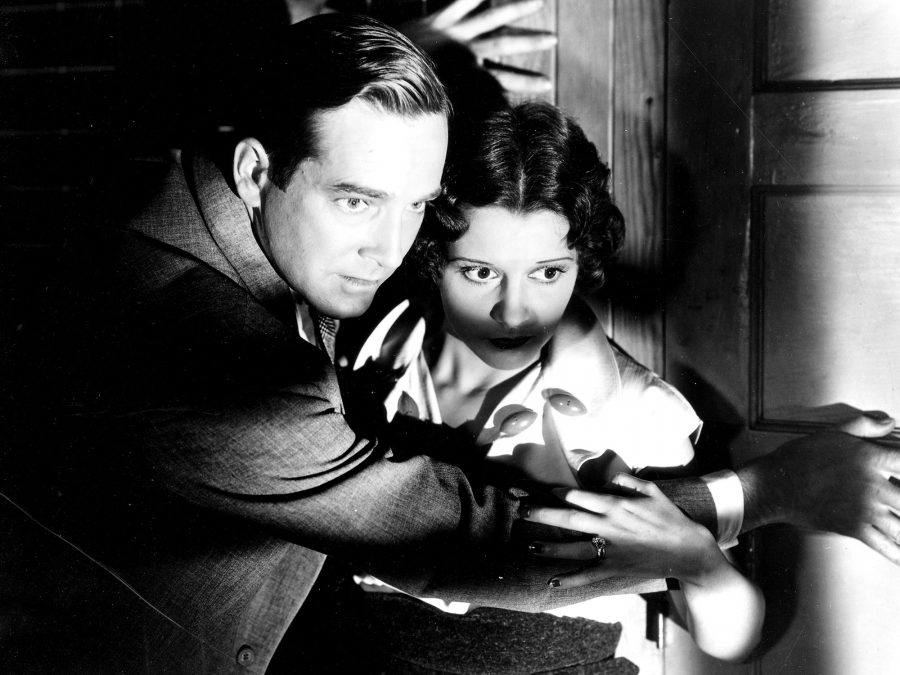Discover the film that brought together two of horror’s greatest stars
Central to Edgar G Ulmer’s The Black Cat is a house built over an ancient graveyard. It is a classic gothic set-up, yet the house, far from conforming to the usual stones, firebrands and cobwebs of Universal Pictures’ castle horror, is a state-of-the-art modernist edifice, custom-designed by its owner, the renowned Austrian engineer and architect Hjalmar Poelzig (Boris Karloff, billed simply as KARLOFF).
For it is all panels and glass, metal and electrical lighting, minimalism and curves, later described by one visitor as “a nice, cosy, unpretentious insane asylum”. If the house’s location, near the small town of Videgrád in Hungary, comes with a long, accumulated history of death, Poelzig himself has contributed to it. For over a decade and a half ago, towards the end of World War One, he had betrayed the area, which was then under his military command, to the Russians, thus ensuring that the number of locals buried there was increased by tens of thousands.
One of Poelzig’s surviving victims, the psychiatrist Dr Vitus Werdegast (Béla Lugosi), has spent the last 15 years in a Siberian prison camp, and is now returning to seek his long-lost wife and daughter, and perhaps some revenge too. On his way by train to Poelzig’s home, he shares a compartment with newlyweds Peter and Joan Alison (David Manners, Julie Bishop), an American couple honeymooning in Hungary.
Peter is somewhat wary of Werdegast – perhaps it is the way he catches the doctor secretly stroking Joan’s hair while she sleeps, and then telling of his long stint in jail – but nonetheless the three travel together, along with Werdegast’s manservant Thamal (Harry Cording), in the same small bus, and when there is an unfortunate accident in a rainstorm, they all end up at Poelzig’s pad. As Werdegast and his “old friend” Poelzig engage in a battle of wits to settle some old scores, the Alisons find themselves trapped on the sidelines, with their very lives at stake.

The Black Cat was the first of six Universal films to bring together two of the production house’s most iconic horror actors: Karloff, who played the Monster in James Whale’s Frankenstein, and Lugosi, who had the title role in Tod Browning’s Dracula. This is a clash of the genre’s heavyweights – as monumental in its own way as Godzilla vs King Kong. And when Poelzig suggests to Werdegast that they are like “the living dead”, the description is not without a certain sophisticated kind of self-consciousness, inevitably evoking both actors’ most famous roles as, respectively, undead vampire and resurrected corpse.
Indeed, Ulmer’s film is full of self-aware nods and winks to the audience. “Of what use are these melodramatic gestures?” Poelzig will ask, practically defining (and questioning) the very mode of the film in which he is appearing. And later, after a plot that offers a heady, not entirely coherent mix of ailurophobia, mummification, uxoricide, Satanic worship, human sacrifice, a live skinning and an early instance of clueless comedy cops (Henry Armetta, Albert Conti), the author Peter, who is a mystery novelist, will read out a newspaper review of his latest mystery potboiler which also serves, reflexively, as a critique of The Black Cat itself: “Mr Alison has, in a sense, overstepped the bounds in the matter of credibility.
These things could never by the furthest stretch of the imagination actually happen. We could wish that Mr Alison would confine himself to the possible instead of letting his melodramatic imagination run away with him.” The screenwriter Peter Ruric, better known by the pseudonym Paul Cain under which he wrote novels, was himself, like the character in the film who shares his forename, an author of pulp fiction – and these lines knowingly pre-empt criticism of the improbable narrative in his own script.
The title of The Black Cat is taken from an 1843 short story by Edgar Allen Poe, but like the other two Poe ‘adaptations’ in which Lugosi would star for Universal (Murders in the Rue Morgue, 1932; The Raven, 1935), and indeed like the later film also called The Black Cat in which he would appear in 1941, Ulmer’s film has only the flimsiest connection to its source material. Werdegast may share with Poe’s protagonist a pathological fear of cats (although he is no alcoholic), and Poelzig may keep his dead wife in the basement (although perversely preserved in a display cabinet alongside other dead women, rather than buried behind bricks).
But otherwise, Ruric has taken Poe’s dead text as his basic foundation, and built upon it “a very tricky house” that accommodates all his own wild conceits. Like the potpourri of arbitrary, entirely innocuous Latin phrases (“with a grain of salt”, “to err is human”, “remember to keep a clear head in difficult times”, “to err is human”) that the po-faced Poelzig stitches together, Frankenstein-like, in his solemn rites to summon Lucifer, The Black Cat is a wittily self-ironising affair, mixing and matching its incongruous parts to produce something thoroughly Poe-stmodern.
The Black Cat is available in the Blu-ray set Three Edgar Allan Poe Adaptations Starring Bela Lugosi, as part of Eureka!’s The Masters of Cinema Series, from 12 April.
The post Discover the film that brought together two of horror’s greatest stars appeared first on Little White Lies.
![Forest Essentials [CPV] WW](https://s3-us-west-2.amazonaws.com/pcw-uploads/logos/forest-essentials-promo-codes-coupons.png)
0 comments